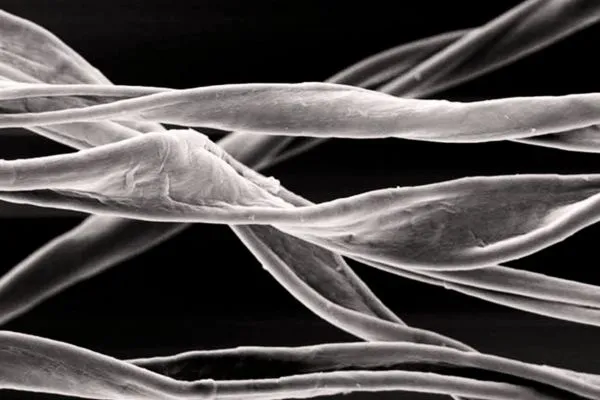1. Non- Technical Test:
i) Feeling Test: Smooth and a soft hand to human skin.
ii) Burning Test: The smell of cotton burning is like paper burning because both are cellulosic materials.
2. Technical Test:
i) Microscopic Test: Kidney-shaped cross-section and natural convolution of longitudinal view easily identified cotton fiber.
ii) Solubility Test / Chemical Test: Cotton is easily dissolved in 70% H2SO4
iii) Density or specific gravity: The density or specific gravity of cotton fiber is 1.54 40/128 pdf

Chemical Modification of Cotton Fiber:
1. P A Cotton: Cotton is treated with acetic anhydride in acetic acid.
2. A M Cotton: Cotton is treated with 2-aminoethyl sulfuric acid in sodium hydroxide.
3. C M Cotton: Cotton is treated with monochloroacetic acid in sodium hydroxide.
4. C N Cotton: Cotton is treated with acrylonitrile.
5. P L Cotton: Cotton is treated with propiolactone.
Methods of Identifying Cotton Fiber
Various methods are employed for the identification of cotton fiber, ranging from visual inspection to advanced instrumental analysis.
1. Visual Inspection Techniques
Visual inspection involves assessing the physical characteristics of cotton fibers. Examples: length, thickness, and surface features.
2. Microscopic Examination
Microscopic examination under a microscope allows for the detailed analysis of cotton fiber morphology and cell structure.
3. Chemical Tests for Cotton Fiber
Chemical tests involve subjecting cotton fibers to specific reagents or dyes to observe characteristic reactions.
4. Instrumental Analysis Methods
Instrumental techniques such as Fourier Transform Infrared Spectroscopy (FTIR) and X-ray Diffraction (XRD) provide detailed chemical and structural information about cotton fibers.
Importance
Accurate identification of cotton fiber is essential for maintaining product quality, ensuring authenticity, and advancing research and development efforts.

Despite the availability of various identification methods, challenges such as contamination, synthetic fiber blends, and evolving textile technologies pose obstacles to accurate cotton fiber identification.
Applications of Cotton Fiber Identification
Cotton fiber identification finds applications in textile manufacturing, forensic science, archaeological studies, and environmental assessments.
Advancements in analytical techniques, integration of artificial intelligence, and the development of portable identification tools are driving future trends in cotton fiber identification.
Conclusion
Accurate identification of cotton fiber is essential for ensuring clothing quality, authenticity, and sustainability across textile industries. With advancements in analytical technology, the future of cotton fiber identification holds promising prospects for enhancing product integrity and sustainability.
